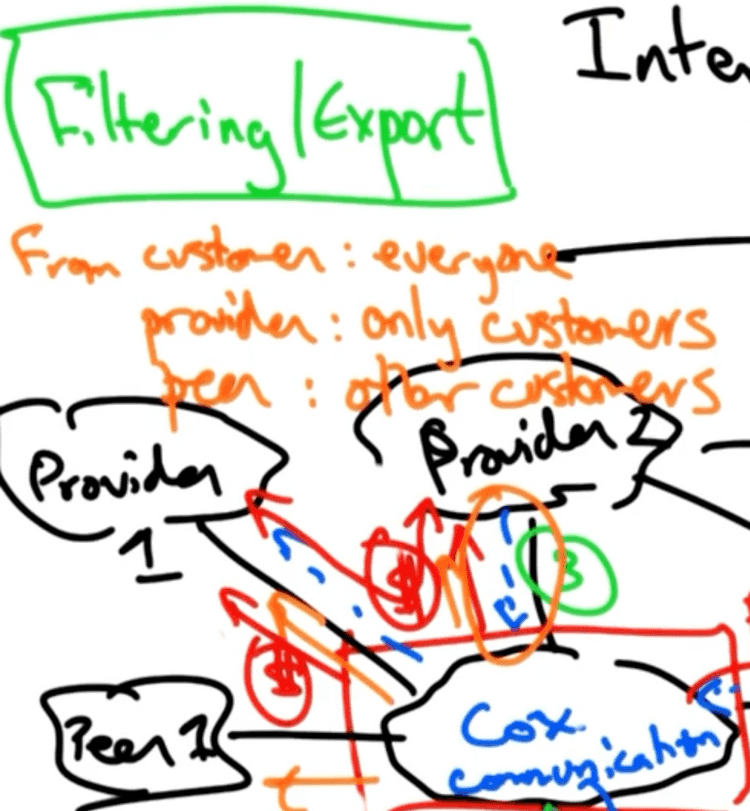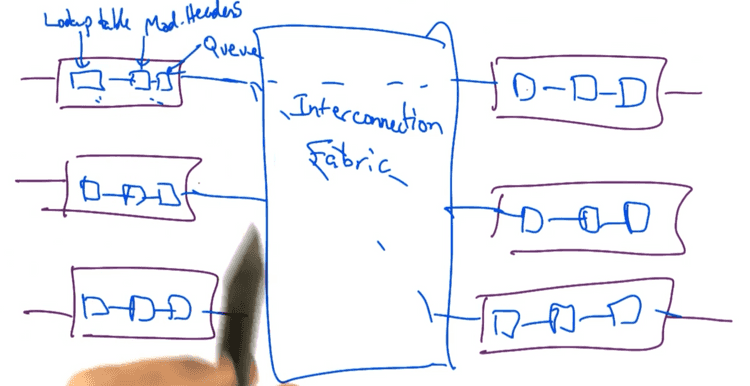Notes: Computer Networks
This is an ongoing course, which is so far just half complete. These are my notes from the same.
Introduction
Jan 1 1983 — internet flag day. Arpanet transitioned to TCP/IP
1982 DNS was rolled out that replaced the host.txt file that used to have a list of all the hosts of the network
1988 TCP congestion control was rolled out
1989 BGP and other routing protocols were rolled out
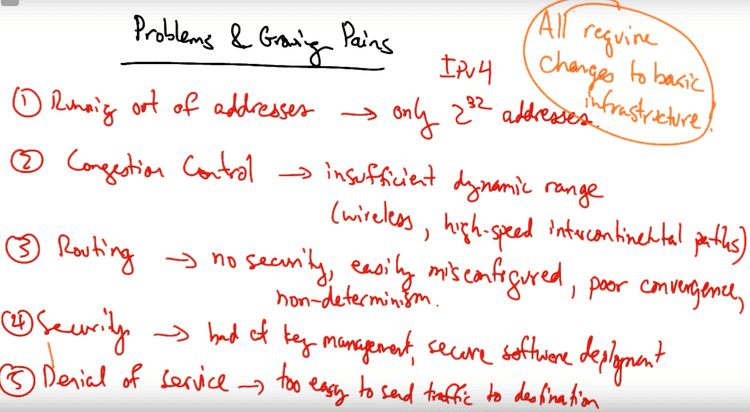
Packet switching
Used to achieve the goal of multiplexing on a network connection
Which means that multiple users can use the same network to send and receive packets. Unlike circuit switching, which is used while making phone calls, no connection is reserved by any party for the duration that it is used.
Pros: better use of resources,
Cons: variable delays, may sometimes lead to lost packets.
Switches
The problems like flooding or broadcasting hell that arise due to a cyclic physical topology in a subnet is solved by using spanning trees to decide how the network packets should be transmitted

Cyclic networks are created to have redundant paths in case of connection failures
Intra Domain AS topology
AS -- Autonomous Systems
nodes - Points of presence (POPs)
edges — constrained by fiber paths
two types of Intra Domain routing
Distance vector
- sends vetors to neighbors
- routers compute cost to each destination for shortest path
- based on bellman ford algorithm
- Problem — count to infinity problem. Solution — poison reverse
- Eg. Routing information protocol (RIP)
- split horizon
- circa 1982
- refresh 30 sec or when updates occur
- edges have unit cost
- inf = 16
Link State
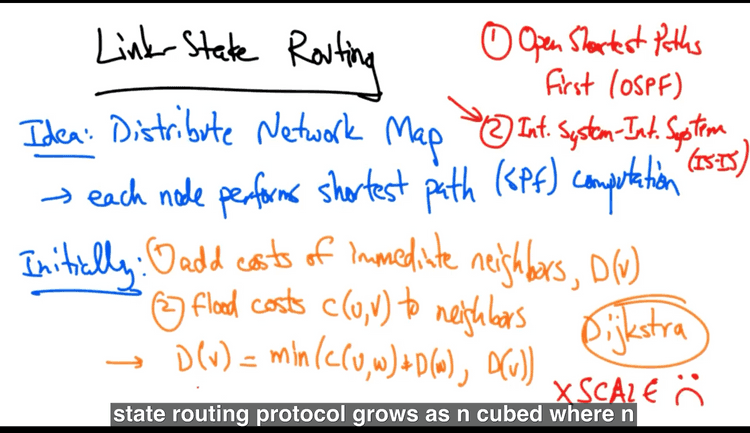
- Eg: OSPF, ISIS
- uses dijkstra for shortest path computation
- Doesn’t scale well, so has the concept of dividing networks into hierarchy layers
Inter domain AS routing
The protocol → BGP
Nodes publish route advertisements
- border router of two neighbouring AS would/might be in the same subnet, typically a /30 subnet
- BGP has two types
BGP route selection process
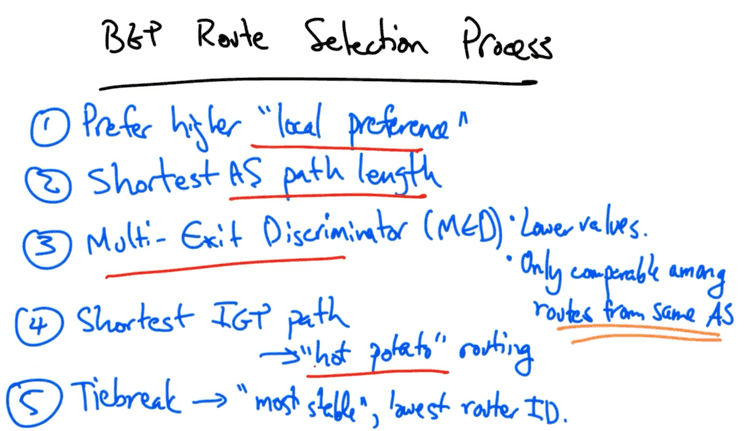
Local preference
- not advertised in route advertisements
- Set by the operator of an AS to prefer one route over the other
- Control outbound traffic
- AS can also use BGP communities to control inbound traffic paths
- It can define a “primary” and “backup” route in route advertisements to prefer one ingress route over the other
- setting BGP communities requires prior agreements
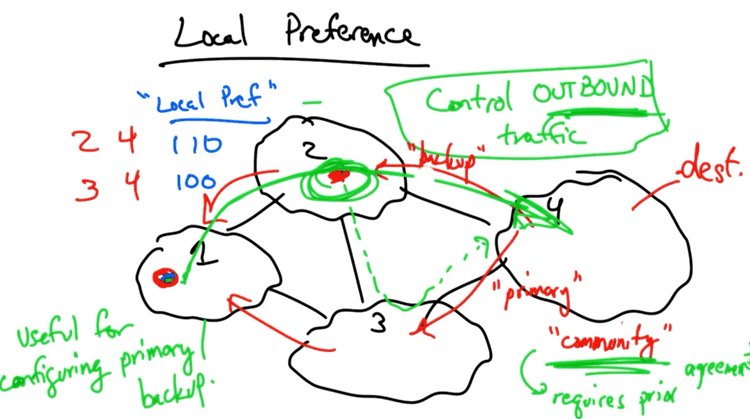
Multiple Exit Discriminator (MED)
- used in cases where there are multiple peer connections between two AS
- MED supersedes IGP path cost calculation, hence avoiding hot potato routing in some cases
- IGP cost changes can lead to too many changes in internally saved routes for IP prefixes. Hence MED helps decouple BGP from IGP
- Eg. When a Transit provider peers with a CDN. Transit provider avoids to carry too much of the CDN’s traffic and advertises med values in a way that makes the CDN route long distances within its network
Inter domain routing business
The concept of routing can be seen as the concept of routing money.
Types of neighbors
There are 3 types of neighboring networks for an AS
- Customers
- Peers
- Providers
How money flows
- When routing, money always flows from the customer to the next network. Hence customers are a source of income
- It is free to route to peers
- Money flows towards the providers. Hence providers have to be paid whenever you route through or for them

Rules
Based on the incentive of making more money.
If every network would follow these rules then routing would be guaranteed on the internet, but it turns out that routing is not guaranteed on the internet.
Ranking
Which network will be preferred for the next hop (although these rules do not seem to be a part of BGP)
Customer > Peer > provider
Filtering/Export
An operator has to decide which of it’s learned routes should be advertised
- It will always advertise routes to a neighboring customer node to everyone because this will help it make money
- It will only advertise peer and provider routes to a customer node because only then it has a chance to make money
IP addressing
Classful addressing

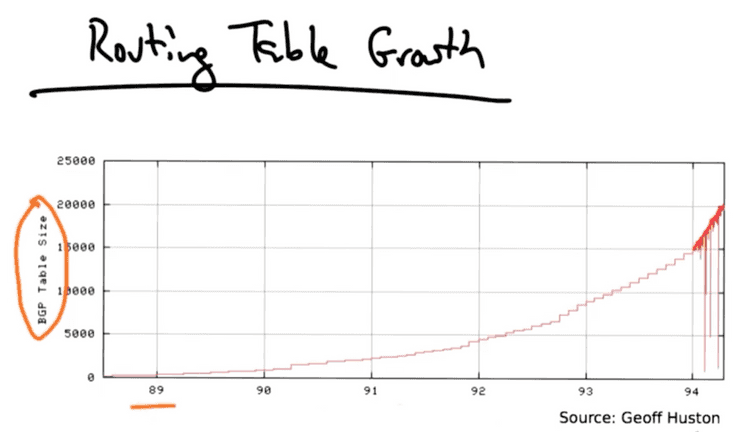
IP address allocation on modern internet
IANA is responsible to assign IP addresses to various IP registeries

whois is a tool used to query an IP address in an IP registery
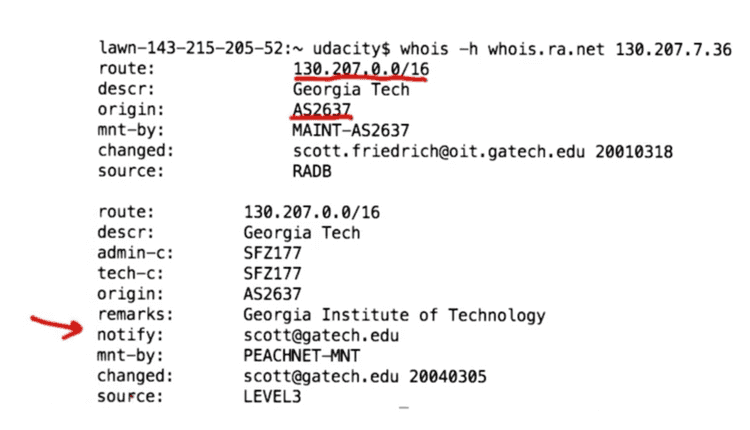
CIDR
in case of overlapping address prefixes, those with longest prefix for net id are preferred in case of routing

Multihoming
Not good for hierarchical IP aggragation
Happens when a stub AS decides to advertise it’s address to other carriers.
Even though it’s original aggregator is already advertising a parent address space (say /8) but another network might now be advertising the longer AS prefix (of say /24)
The longer prefix will be chosen because of the rules, and so to avoid that the original parent network also has to advertise and store IPs of its hosts in its routing table. This leads to longer prefix addresses populating in global address registries
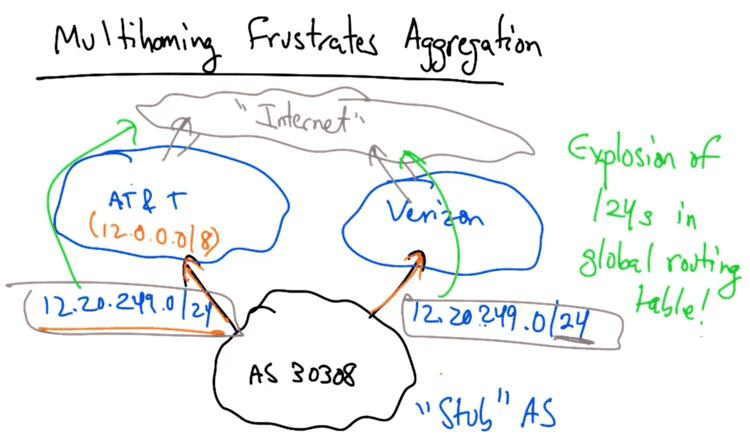
Just like AS path pretending, Longest prefix match can be used to control inbound traffic
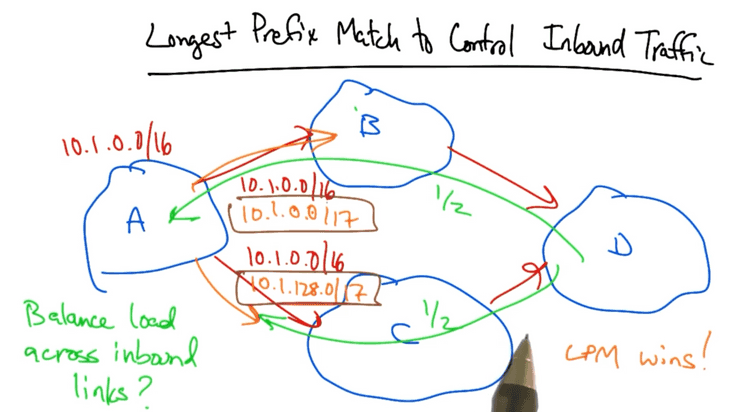
The weekly CIDR report shows which AS are advertising overlapping prefixes and the amount of improvements that can make on their current aggregation techniques
Using tries for lookups
- Single bit trie — Efficient memory usage but requires too many memory accesses for a 32 bit lookup. This increases lookup times significantly
- Direct trie — instead of single bit lookup we partition the address into two parts of variable bit lengths
Fast and memory efficient
Use multi-ary trie
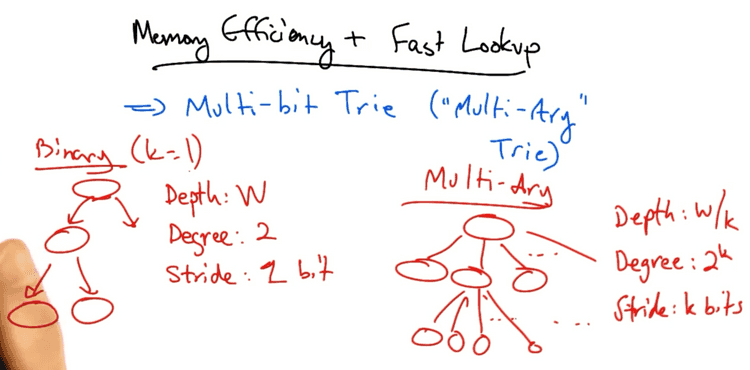
Eg.

Further optimizations can include techniques like
- creating a leaf pushed trie to avoid one extra memory access on leaf nodes when the node above it is empty


- Other techniques are called
- Lulea
- patricia
Alternatives
Didn’t quite understand this

NAT — Network Address translator
Due to scarcity of ip addresses, networks have internal private IPs. These are specified in RFC 3130 (as said in the course, but found concrete details in RFC 1918)

So a NAT just creates a mapping from the private ip and port to the public ip and port. This way they can use the same public ip and keep changing the port, thereby eliminating the need to assign unique address to all the devices on the network.
NAT violates internet rules
- The e2e rule is violated because if a NAT fails, then the received packets will not reach the right host inside the network
- They also restrict direct bi-directional communication between two hosts in different private networks
IPv6
need to better understand the breakdown of the address bits
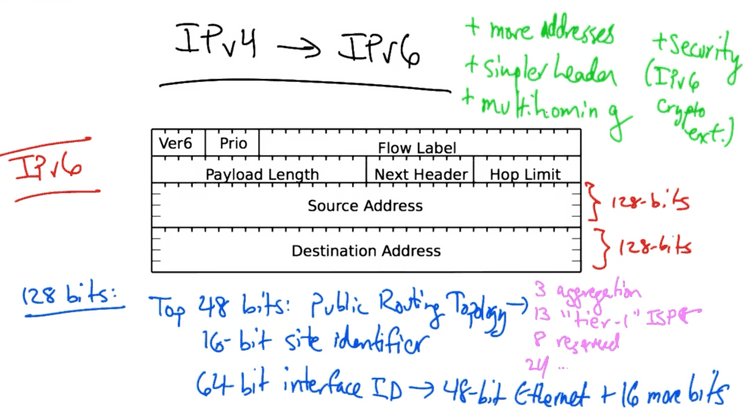
Note that the address has 13 bits reserved for Tier-1 ISP
So if you change providers the source address changes
To Look into How does QUIC fix this problem with streams? Is it just because it uses UDP for now and might break when it used independently on the transport layer?
Incremental deployment
Deployment is hard due to protocol ossification (will link to soon to be released notes of QUIC, but here's the gist)
Wikipedia: Protocol ossification is the loss of flexibility, extensibility and evolvability of network protocols This means that introducing new protocols is hard because routers and other middleboxes violate the end-to-end principle.
In short, the current middle boxes are only designed to understand IPv4, not v6
But we can’t just replace these with IPv6 compatible versions of the equipment because it would then break the currently running IPv4 backed infrastructure ⇒ Hence they did incremental deployment
Dual stack deployment
One approach to incremental deployment would be to use a dual stack middle box.
Meaning one that can understand both IPv4 and IPv6
There can be two approaches to building a dual stack infrastructure
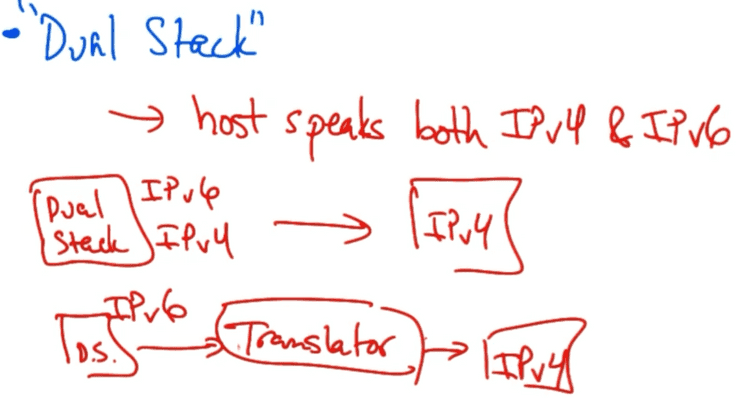
v6 to 4 tunneling
Basically sending the v6 packet as data inside a v4 packet in a v4 silo

I wonder how the routing negotiations for this work, and if this is even considered. Would this be advertised in BGP route announcements? Or is it factored in the calculation for MED? Would this even have a significant increase in RTT to even be considered as a route deciding factor? Probably not
Router
A router contains line card that is I guess the core of what executes all the functionality
Every line card has these components to carry out the following roles

Roles of a router
- Receive a packet
- Read packet headers to determine destination
- Search for entry in forwarding table to determine the correct output interface for the packet
- Modify packet headers, like
- Decrement the TTL
- Updating packet checksum appropriately
- Send the packet to the output interface
Important decisions
Copies of forwarding tables
Earlier, all the line cards on a router used a central lookup table over a shared bus.
But this became a bottle neck
Now every line card has a copy of the look up table.
This although has it’s own complications of handling coherence among the various copies, but it is much more faster
Crossbar Switching
Switching happens in timeslots
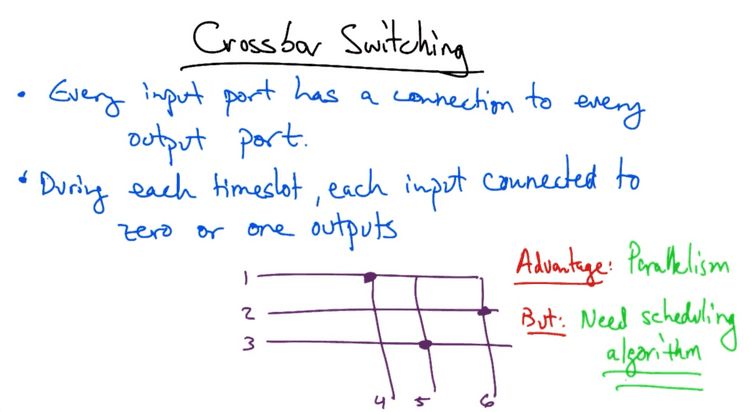
Switching algorithm: Maximal matching
Even though we can only have one connection between the input and output port through the interconnect, per timeslot, we can speed up matching by doing multiple matching in the same time slot, if there are multiple matching required for a given port in a given timeslot
For eg, if the interfaces have a 10Gbps connection, then it is possible to increase number of matching per timeslots by have interconnect speed more than that
This is termed speedup!
Head of line blocking
But speedup does not work if the port sending the packet only has one queue, because even though the interconnect is capable of handling multiple connections now, the packets are still processed synchronously because of the single packet queue
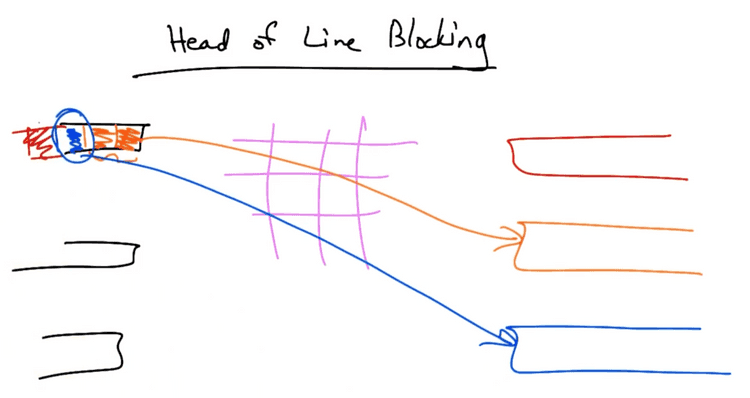
Solution: virtual output queues
Having separate output queues for designated output ports

Scheduling
The decision about which ports should be matched in any particular time slot
During which timeslots should input and output ports be matched
Considerations
Efficiency: If there is a packet to be sent and the output port of that packet is available, then the scheduling should be such that it is possible to switch connections quickly to send that packet
Fairness: Given demands at the inputs, each queue at the input is scheduled fairly!
max-min fairness
Here flow allocations are flow rates at input port
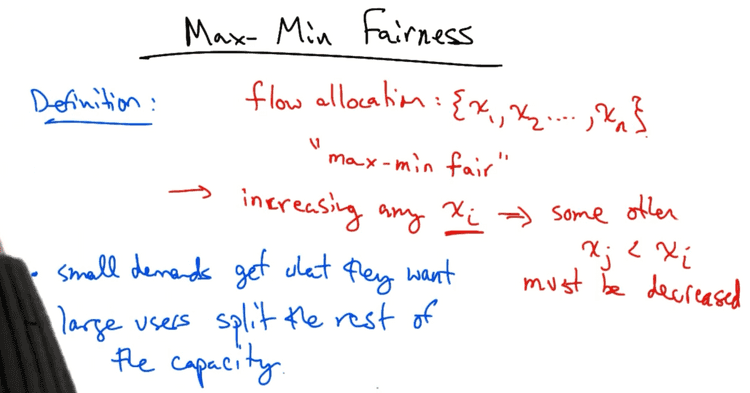
Eg:
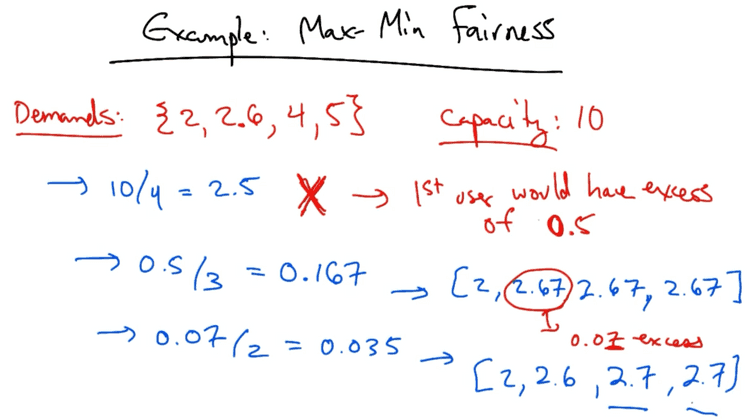
The dividing by 4 is based on the number of inputs
Note:
- that the demand exceeds capacity
- demands of small users are met fully
- for the large demand users (those whose demands are not fully met) the remaining capacity is shared equally
Different ways to achieve max-min fairness

DNS
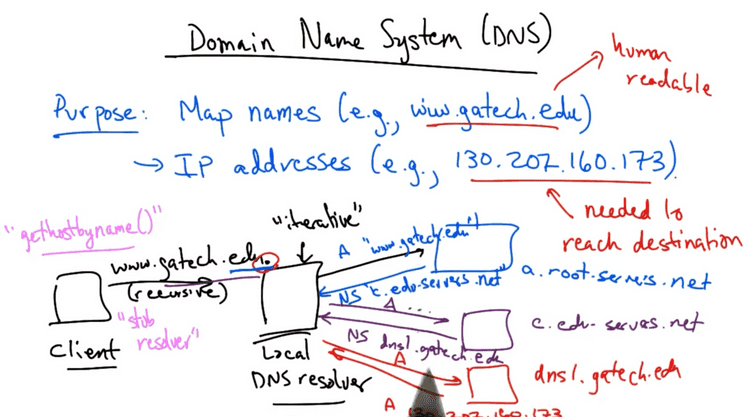
Caches
Caches are stored along with a TTL
Caches include NameServer record
Global records like those of google.com rarely change have a larger TTL
Local records like smaller websites have a smaller TTL
Record types
- A: Name → IP
- NS: Name → Authoritative nameserver ⇒ Leads to further queries, helps implement herarchy
- MX: Name → Mail Server
- CNAME: Canonical name ⇒ This is a pointer to another domain name that needs to be looked up
- PTR: IP → Name ⇒ reverse Lookup
- AAAA: Name → IPv6 Address
dig
There are various commands explained in the course, which are easy to learn with a simple 5 minute tutorial
But it is interesting to follow the trace for a PTR query 👇
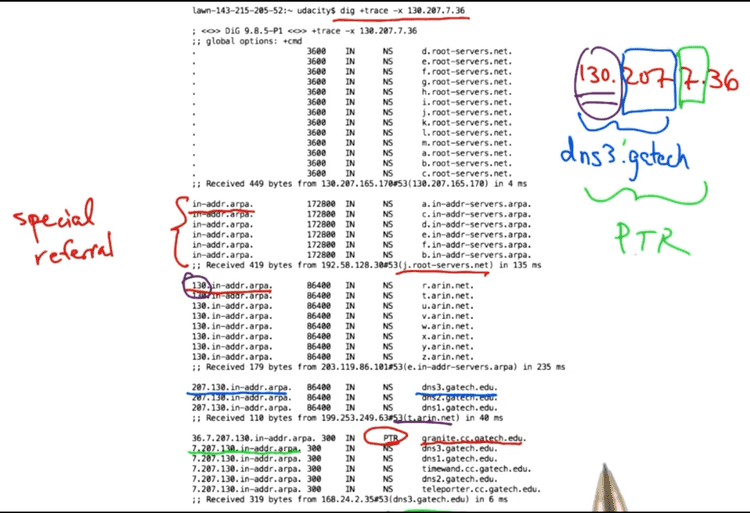
in-addr.arpa is an interesting top level nameserver for this
Congestion control
Congestion
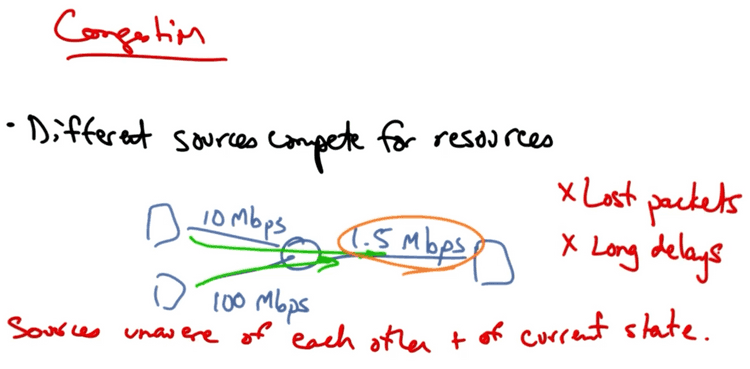
Congestion collapse
Increase in load results in Decrease in useful work

Causes:
- Spurious retransmission of packets. Packets that do not receive ACK. Can be solved by better timers
- Undelivered Packets. Resources consumed but dropped later
Congestion collapse isn’t just theory and has been observed in many networks
Congestion collapse can be prevented by proper congestion control
Goals of congestion control
Same as scheduling in router interconnect (efficiency + fairness) + avoid congestion collapse
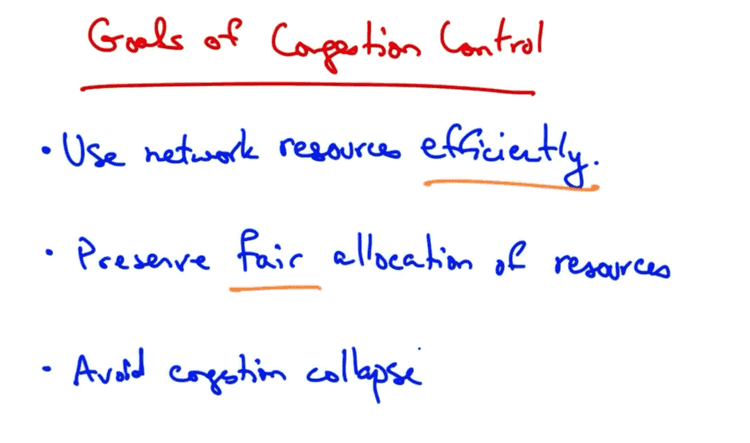
Approaches
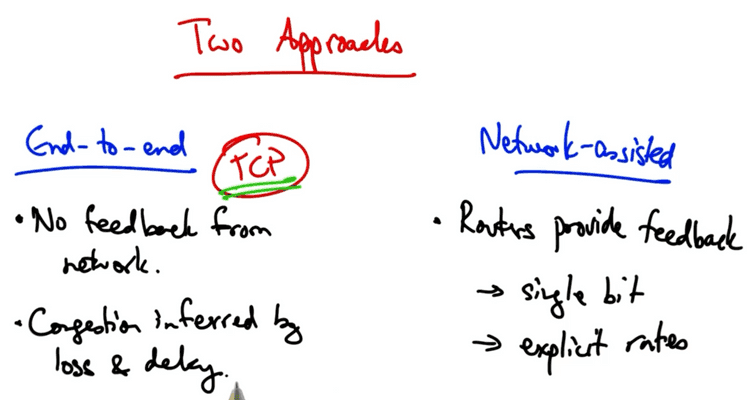
TCP congestion control
Sender increases rate until packets are dropped
TCP interprets packet loss as congestion control and slows down
Although this might not always be true. For eg. in wireless networks, packets can be lost due to interference
But this is generally a good assumption
I remember reading an article referring to TCP slow start that is a hack on this behaviour of TCP for better performance Link: Why your website should be under 14kB in size
Approaches to Adjusting rate
-
**Window-based (**Generally used // widely implemented )
Additive increase Multiplicative decrease (AIMD)
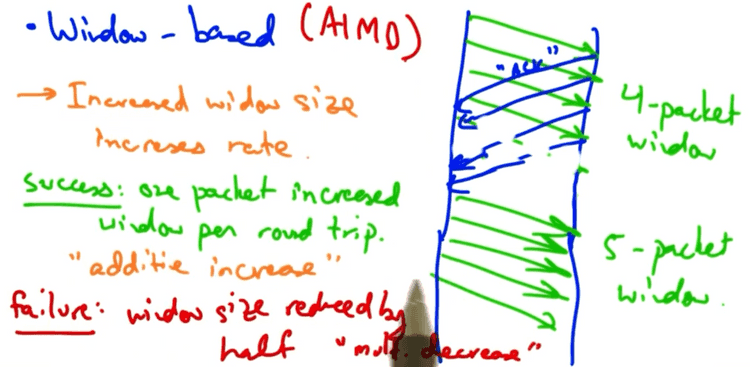
Phase plot
Graph of flow rates of different input ports agoinst each other. The optimal point is where the effectiveness curve intersects the fairness curve
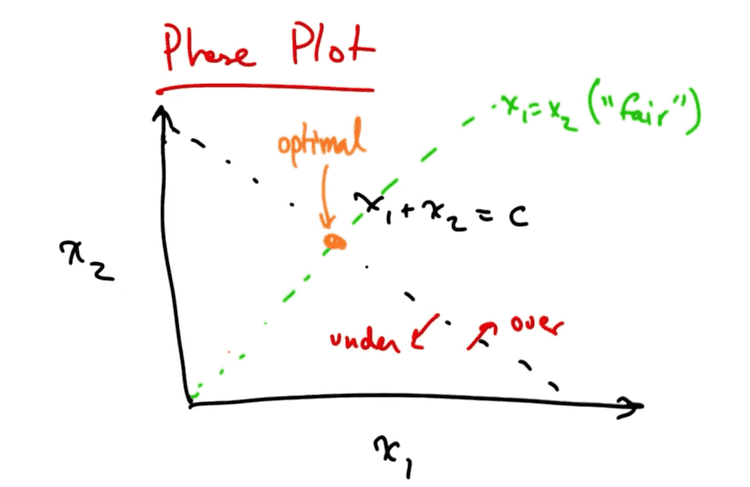
AIMD always converges to optimal point (fairness + efficiency)

Additive increase ⇒ increases efficiency
Multiplicative decrease ⇒ increases fairness
TCP saw tooth
This happens as a result of AIMD

Here Wm is the max window size
Note that Throughput is inversly proportional to RTT and LossRate
TCP incast problem
Generally seen in data centers

Caused when the server make several requests that fill up the buffers in the intermediary switches (which are generally small)
This results in retransmissions after only after timeouts
In TCP, timeouts occur after several hundred milliseconds, but the RTT inside a data center is generally less than 1ms
Multimedia & Streaming
Mininet assignment (deleted)
TODO
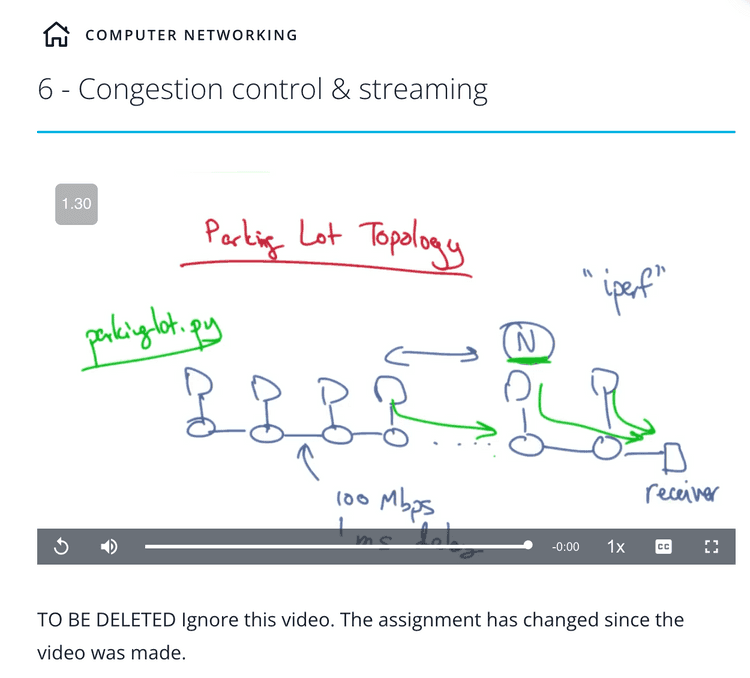
To be continued

